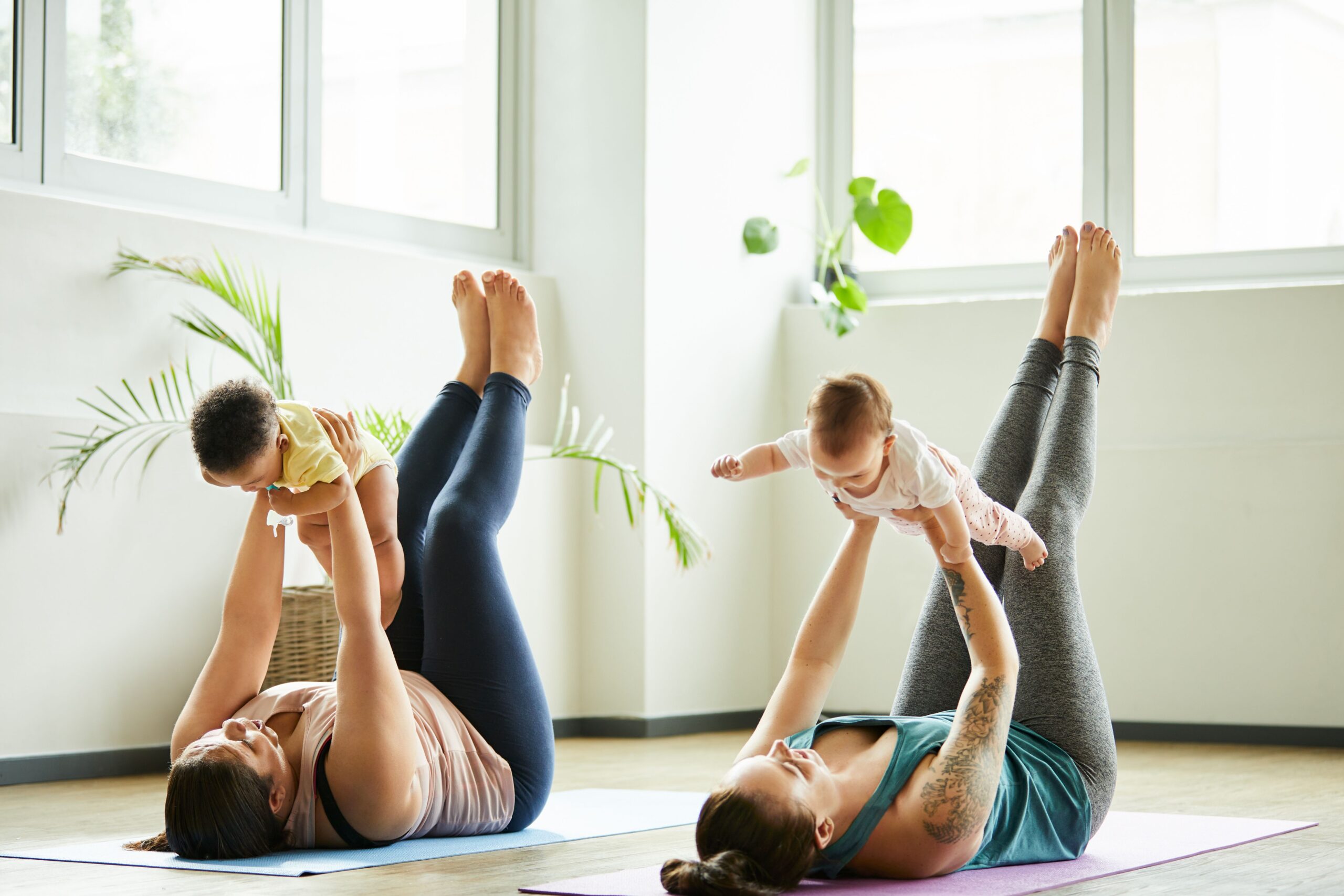Baby yoga is a gentle and nurturing practice that can help support your baby’s physical and emotional development. By incorporating simple stretches, movements, and relaxation techniques, baby yoga can help build flexibility and strength. In this blog, we’ll explore the benefits of baby yoga and share some strategies for incorporating it into your baby’s routine.
The Benefits of Baby Yoga
Incorporating baby yoga into your little one’s routine can provide numerous benefits for both babies and parents. Here are some of the key advantages:
1. Promotes Physical Development
Baby yoga helps to improve flexibility, balance, and muscle strength. By incorporating gentle stretches and movements, baby yoga supports your baby’s overall physical development, including motor skills and coordination.
2. Enhances Bonding
Practicing baby yoga together fosters a strong emotional connection between you and your baby. The soothing touch and shared experience help to build trust and strengthen the parent-child bond.
3. Improves Sleep
The calming nature of baby yoga can help your baby relax and sleep better. By incorporating relaxation techniques and gentle movements, baby yoga can promote a sense of calm and improve sleep quality for both babies and parents.
4. Aids Digestion
Gentle movements and stretches can stimulate digestion and help alleviate gas and constipation. Baby yoga can also help to relieve colic symptoms by promoting relaxation and releasing trapped gas.
6. Reduces Stress and Anxiety
Baby yoga can help to reduce stress and anxiety for both babies and parents. The practice encourages mindfulness and relaxation, helping to lower stress levels and create a sense of well-being.
7. Encourages Social Interaction
Attending baby yoga classes can provide an opportunity for social interaction for both babies and parents. Meeting other parents and babies in a supportive environment can help to build a sense of community and provide opportunities for shared learning and experiences.
8. Supports Postpartum Recovery
For parents, practicing baby yoga can help support postpartum recovery. The gentle movements and stretches can help to strengthen and tone muscles, improve posture, and promote relaxation.
Baby Yoga Strategies for Building Flexibility and Strength
Before starting baby yoga, make sure your baby is in a calm state and not actively crying. Choose a warm, quiet room with a comfortable surface for your baby to lie on. Always consult with your pediatrician before beginning any new exercise routine with your baby.
1. Gentle Stretches
Incorporate gentle stretches to help improve your baby’s flexibility and range of motion. Some examples include:
- Leg stretches: Gently hold your baby’s ankles and slowly extend their legs out straight, then bend the knees back towards the chest.
- Arm stretches: Hold your baby’s wrists and gently extend their arms out to the sides, then bring them back together above the chest.
Repeat each stretch a few times, paying attention to your baby’s cues and stopping if they become fussy or uncomfortable.
2. Tummy Time
Tummy time is an essential practice for building strength and supporting your baby’s physical development. Encourage tummy time by:
- Placing your baby on their tummy for short periods each day, gradually increasing the duration as they become more comfortable.
- Using toys, mirrors, or your own face to engage your baby and encourage them to lift their head and chest.
- Providing support under your baby’s chest with a rolled-up towel or small pillow if needed.
3. Baby Yoga Poses
Introduce simple baby yoga poses to help build strength and balance. Some examples include:
- Happy Baby Pose: With your baby on their back, gently hold their feet or ankles and encourage them to bend their knees towards their chest. Gently rock your baby from side to side, if they enjoy the movement.
- Bridge Pose: With your baby on their back, hold their hands and gently lift their upper body off the ground, supporting their head and neck.
Repeat each pose a few times, always paying attention to your baby’s comfort and stopping if they become fussy.
4. Relaxation Techniques
Incorporate relaxation techniques to help your baby calm down and unwind after the yoga session. Some ideas include:
- Gently massaging your baby’s body with soft, soothing strokes.
- Singing or humming softly to your baby.
- Practicing deep, slow breathing together with your baby.
5. Parent-Baby Yoga
Include your baby in your own yoga practice to enhance bonding and expose your baby to new movements and experiences. Some examples include:
- Holding your baby while practicing standing poses, such as Tree Pose or Warrior II.
- Placing your baby on your legs or chest during seated poses, such as Seated Forward Bend or Boat Pose.
Always prioritize your baby’s safety and comfort during parent-baby yoga sessions.
Frequently Asked Questions about Baby Yoga
1. When can I start practicing baby yoga with my baby?
You can start practicing baby yoga with your baby once they have good head and neck control, typically around 3-4 months of age. However, always consult with your pediatrician before starting any new exercise routine with your baby.
2. How often should I practice baby yoga with my baby?
Aim to practice baby yoga 2-3 times per week, adjusting the frequency based on your baby’s needs and response to the practice.
3. Can I practice baby yoga if my baby has a medical condition?
If your baby has a medical condition, consult with your pediatrician before starting baby yoga. They can provide guidance on whether baby yoga is appropriate for your baby’s specific needs and any precautions you should take.
4. How long should each baby yoga session last?
Each baby yoga session should last between 10-20 minutes, depending on your baby’s tolerance and response to the practice. Pay attention to your baby’s cues and stop the session if they become fussy or uncomfortable.
5. Can I practice baby yoga with my baby if I have no yoga experience?
Yes, you can practice baby yoga with your baby even if you have no yoga experience. Baby yoga focuses on simple, gentle movements and stretches that are easy to learn. Consider attending a baby yoga class or following online tutorials to learn the basics and ensure you’re practicing safely.
Author
-


Dr. Sajid is a highly respected and experienced pediatrician who specializes in treating children of all ages. With a background in medicine and a passion for working with kids, Dr. Sajid has dedicated his career to helping young patients lead healthy and happy lives. He is particularly skilled in treating common childhood illnesses and developmental issues, such as allergies, asthma, and behavioral problems. Dr. Sajid is known for his gentle and compassionate approach to working with kids, and he is committed to making each visit to the doctor a positive and comfortable experience for his patients. His expertise in the field of pediatrics, combined with his warm and caring demeanor, make Dr. Sajid an excellent choice for families in need of a trustworthy and skilled kids doctor.
Drsajid@gmail.com Dr Sajid

